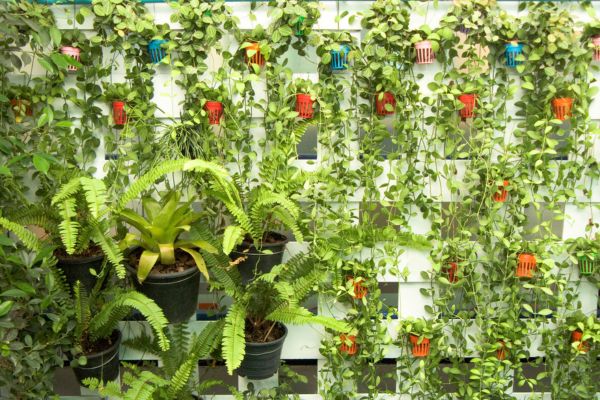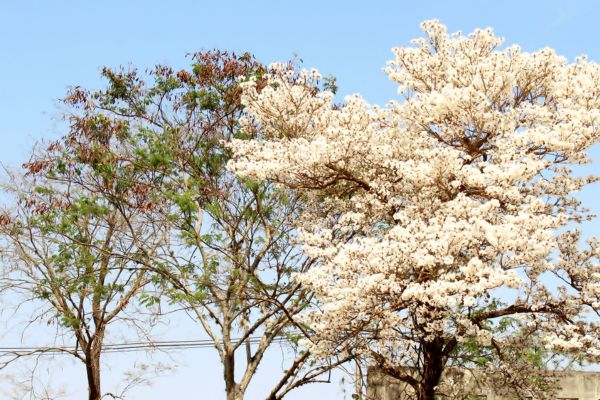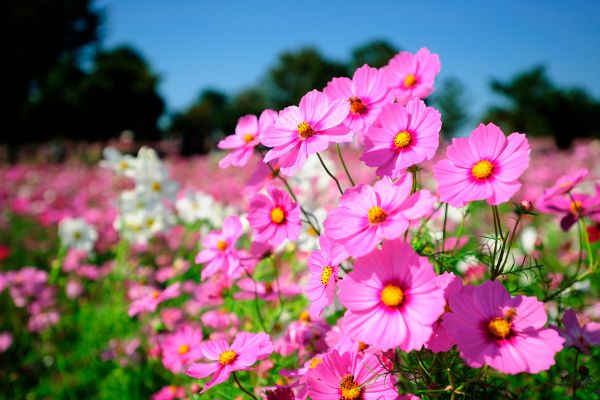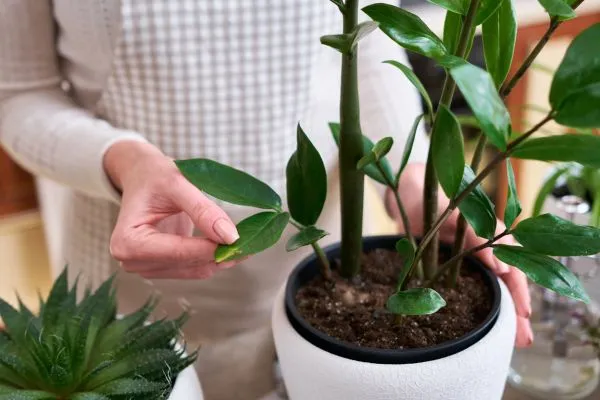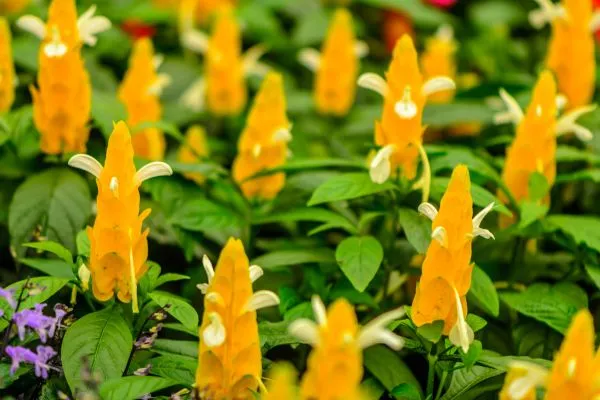Yellow Ipês: The Radiant Beauty of Nature in Vibrant Colors
Yellow Ipês are magnificent trees that enchant and illuminate landscapes throughout Brazil. With their exuberant flowers and vibrant yellow hue, these trees are true jewels of Brazilian flora. In this article, we will explore the beauty of Ipês Amarelos, their striking characteristics, how to grow them and the impact they have on biodiversity. Plus, we'll answer frequently asked questions about these stunning trees.
The Wonder of Yellow Ipês
Yellow Ipes: An explosion of color in nature, Yellow Ipês are known for their vibrant flowers that transform the landscape into a palette of golden tones during the flowering season. The keyword “Ipês Amarelos” not only describes a tree, but symbolizes a unique visual experience, where nature dresses in its most radiant mantle.
These trees belong to the Tabebuia genus, and the most common scientific name is Tabebuia serratifolia. Originally from Brazil, Yellow Ipês are found in different regions, from the Amazon to the Cerrado. The grandeur of these trees and their ability to transform landscapes make Ipês Amarelos an unmistakable element of Brazilian flora.
Notable Characteristics of Yellow Ipês
Yellow Ipês have several characteristics that make them unique and admirable. The intense yellow hue of its flowers is, without a doubt, its most striking feature. During flowering, which usually occurs in spring, Yellow Ipês fill the fields and avenues with their exuberant beauty, creating a visual spectacle that is enjoyed by people of all ages.
Another notable feature is the resistance of these trees. Yellow Ipês are adaptable to different types of soil and climates, which contributes to their wide distribution throughout the Brazilian territory. Additionally, they are trees that require little care, making them a popular choice for both urban and rural areas.
How to Grow Yellow Ipês: Tips and Care
Growing Yellow Ipês in your own garden can provide a unique and rewarding experience. Here are some essential tips for those who want to have these stunning trees in their space:
- Soil Choice: Ipês Amarelos are versatile, but prefer well-drained soils. Make sure you choose soil that allows water to drain properly.
- Suitable Location: Plant your Ipês Amarelos in sunny locations. These trees thrive in direct sunlight and bloom best in well-lit areas.
- Moderate Watering: Although Ipês Amarelos are drought resistant, they appreciate moderate watering, especially during the first few months after planting. Once established, these trees require little water maintenance.
- Conscious Pruning: Prune lightly to maintain the tree's shape and health. Avoid drastic pruning, as this can harm the healthy development of Ipês Amarelos.
By following these guidelines, you will be able to enjoy the majestic presence of the Yellow Ipês in your own environment, contributing to the beauty of your garden and promoting the preservation of this valuable species.
Impact on Biodiversity and Conservation
Yellow Ipês play a crucial role in biodiversity and environmental conservation. Its presence contributes to maintaining ecological balance, providing shelter and food for various species. The flowers of Yellow Ipês attract pollinators, such as bees and butterflies, playing a vital role in the pollination of other plants in the region.
Furthermore, the planting and preservation of Ipês Amarelos helps to combat deforestation and promote environmental sustainability. These trees resist adverse conditions and are essential for maintaining biological diversity in different ecosystems.
Dazzling Varieties of Yellow Ipês
In addition to the striking yellow hue that characterizes Yellow Ipês, there is a surprising variety of subspecies and varieties that offer unique nuances to the beauty of this iconic tree. In this segment, we will explore some of the most notable varieties of Yellow Ipês, highlighting their distinct characteristics and further enriching the visual experience that these trees provide.
1. Tabebuia serratifolia – The Classic Yellow Ipê
The most common and widely recognized species is the Tabebuia serratifolia, also known as the “true Yellow Ipê”. This variety is notable for its intense yellow flowers and its imposing presence in several regions of Brazil. O Tabebuia serratifolia It is the embodiment of the classic beauty of Ipês Amarelos and is often found in parks, gardens and roadsides.
2. Tabebuia ochracea – The Golden Yellow Ipê
With its flowers in softer yellow tones, the Tabebuia ochracea, known as Ipê Amarelo Ouro, stands out for the delicacy of its color. This variety provides a softer but equally charming view and is a popular choice for residential areas and squares.
3. Tabebuia alba – The Silvery Yellow Ipê
A unique variant, the Tabebuia alba, nicknamed Silvery Yellow Ipê, features flowers with a hue that resembles aged gold, providing a distinctly elegant look. This variety is appreciated for its uniqueness and is often used in landscape projects that seek a touch of sophistication.
4. Tabebuia chrysotricha – The Yellow Ipê Garden
O Tabebuia chrysotricha, also known as Ipê Amarelo de Jardim, is notable for the intensity of its flowering. Its flowers display a mixture of yellow and golden tones, creating an exuberant visual spectacle. This variety is often chosen to beautify gardens and residential spaces.
5. Tabebuia aurea – The Yellow Ipê of the Cerrado
Originally from the Brazilian Cerrado, the Tabebuia aurea, or Ipê Amarelo do Cerrado, stands out for its resistance to more arid conditions. In addition to the beauty of its flowers, this variety demonstrates exceptional adaptability.
FAQ – Frequently Asked Questions about Ipês Amarelos
Can I plant Yellow Ipês in any region of Brazil?
Yes, Yellow Ipês are adaptable and can be planted in different regions of Brazil. Be sure to choose a sunny location with well-draining soil.
When is the best time to plant Yellow Ipês?
The best time for planting is during spring, when weather conditions are more conducive to the healthy development of the tree.
Do Yellow Ipês require a lot of water?
Although they are resistant to drought, Ipês Amarelos appreciate moderate watering, especially in the first months after planting.
How can I promote the conservation of Yellow Ipês?
Participating in reforestation programs, avoiding illegal logging and promoting awareness about the importance of these trees are effective ways to contribute to their conservation.
Are Yellow Ipês threatened with extinction?
Currently, the Yellow Ipês are not listed as an endangered species. However, it is crucial to adopt sustainable practices to ensure their long-term preservation.
Conclusion
In conclusion, the Yellow Ipês are natural treasures that enrich the Brazilian landscape with their radiant beauty. Cultivating and preserving these trees not only contributes to aesthetics but also plays a vital role in conserving biodiversity and promoting environmental sustainability. By following cultivation tips and becoming aware of the importance of these trees, each of us can be a guardian of the magnificent natural heritage represented by Yellow Ipês.

